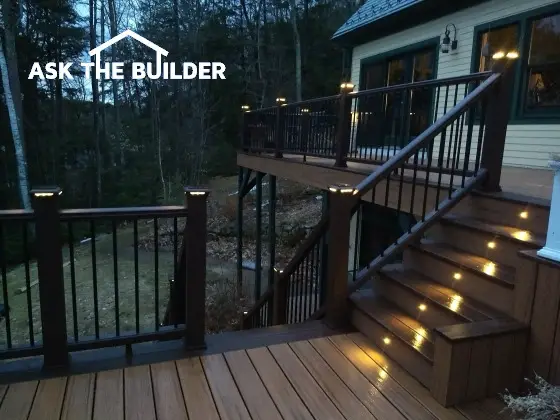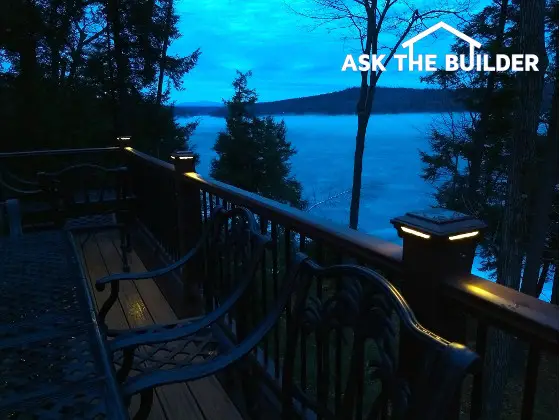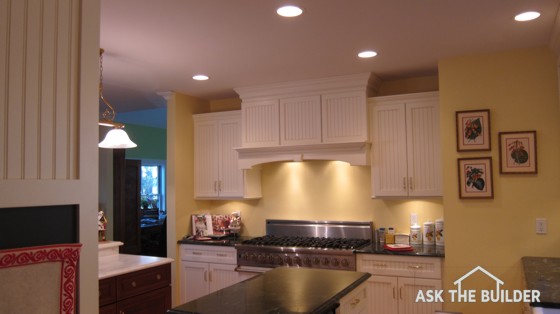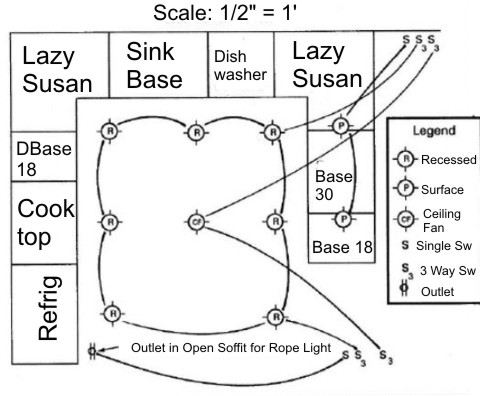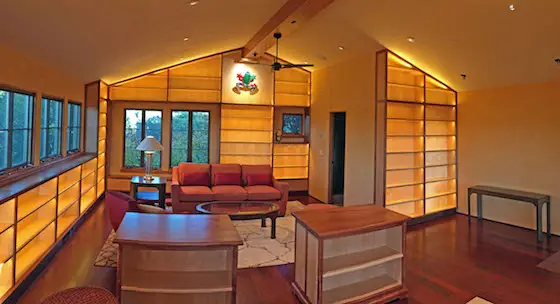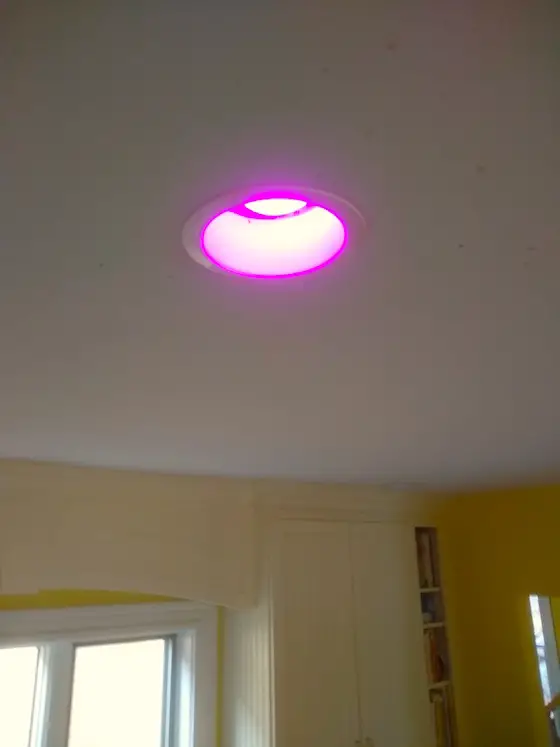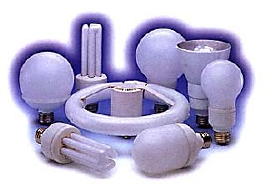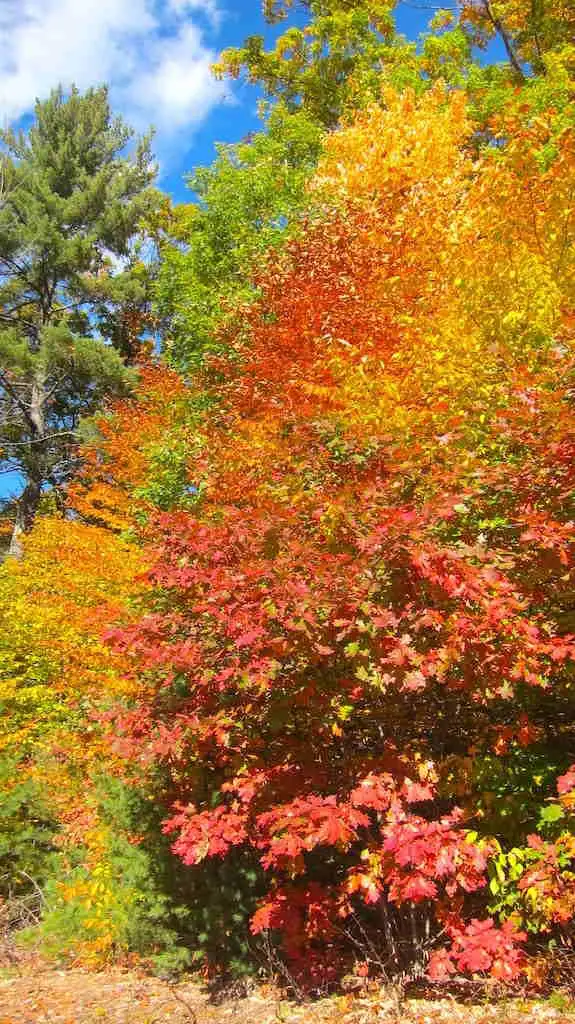
These are trees on a 90-acre tract of land I own in central NH. As you can tell, it was peak color. The photo was taken about 1 PM and not even close to the golden hour around 5 PM!
Color Temperature - It's all About Kelvin - No, Not Kevin
I remember that autumn afternoon vividly in my mind. It was a brilliantly sunny afternoon. The fall colors were at their peak. I had driven past this particular maple tree every day. However, the depth of color was so dramatic, I raced home to get Kathy, my wife. The orange and red leaves, when brushed by the breeze, made the tree look as if it was being consumed by fire.
We got back to the tree within 15 minutes. Although the tree was still beautiful, it didn't seem to possess the same brilliance. The sky was still cloud-free. The difference, although I didn't know it at that time, was that the color temperature of the sun had probably dropped several hundred degrees. Kathy said, "What's so great about the tree? It looks just like any other tree around here." No matter how I tried to describe it, it didn't seem to make any difference. She mumbled about me seeing an eye doctor as we walked back home.
You should read my other two columns. Here's the original color temperature column that appeared in over 100 newspapers across the USA. I then produce an extra document people could buy for $2. This document was split into two parts. This page is one. Here's the other half of the color temperature document.
Color Temperature in Geology Photography Class
I first learned about color temperature back in college. At that time, I was deeply involved in photography. I was taking an advanced course in color photography when the topic was first introduced to me. It was very confusing at the time. I don't think the professor did a great job of showing us examples of the color temperature scale. All I remember was that different lights had the ability to render different colors. I also remember that the final exam was a killer.
The Kelvin Scale and Color Temperature
Light (from the sun, a flashlight, light bulb, etc.) is simply visible electromagnetic energy. Visible light contains different colors of light. You see these colors whenever you witness a rainbow, or an artificial rainbow created by a prism or cut glass.
The science community uses three temperature scales: Fahrenheit, Celsius, and Kelvin. Most of us in the USA are familiar with the Fahrenheit scale. This is the scale we use to measure our weather and cooking temperatures.
The Kelvin scale is used primarily by scientists. It does not have any negative values. In other words, the absolute coldest anything in the universe could get on the Kelvin scale would be 0 degrees.
Heating an object can produce the rainbow of colors. That is where the Kelvin temperature scale comes in. If you begin to heat an object, it eventually begins to radiate color. Just like a rainbow, the color at lower relative temperatures is in the red/orange range. As the temperature increases, the color begins to pass through yellow, green, and finally ends with blue/violet. You can demonstrate this to a limited degree if you turn on an electric stove element or a toaster. The glowing metal (usually orange) is radiating that color. This is also why embers glow in a fire.
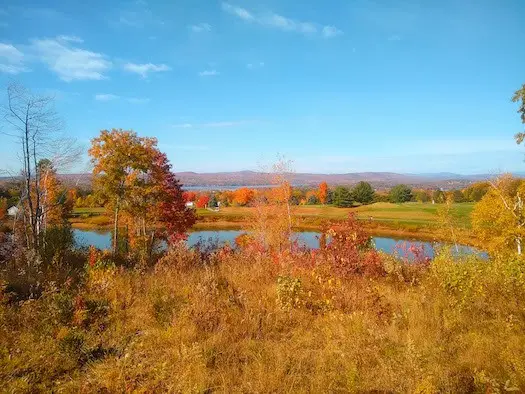
This is a shot looking towards tee box number 2 across that pond and to the right at Pheasant Ridge golf course in Gilford, NH. I took this photo in October of 2020 on a glorious morning just after the golden hour. The colors were still vibrant.
Kelvin and My Tree Story
Remember the tree I thought was so beautiful? It just so happened that I drove past the tree when the sunlight was producing the best orange/red light. On the Kelvin scale the color temperature would be around 2850, maybe a little higher. This happens in the morning and afternoon.
At noontime, the color range is closer to the blue/violet range. The Kelvin temperature on a cloud-free day at solar noon would be at 5,600 or better.
World-class photographers use this to their advantage. Take National Geographic for example. Those awesome photos in that magazine may take days to shoot. The photographer will wait for just the right light temperature to get the effect he or she is looking for. For this same reason, if you visit the Grand Canyon on a vacation, DON'T take pictures at high noon. The colors in the canyon will appear washed out in your photos. Take them just a little after sunrise, or a little before sunset to get the best orange and red coloration.
Column B101
